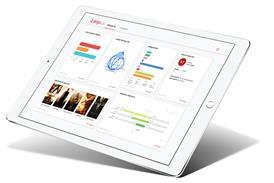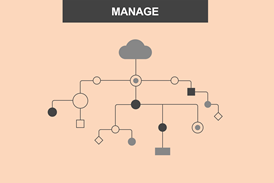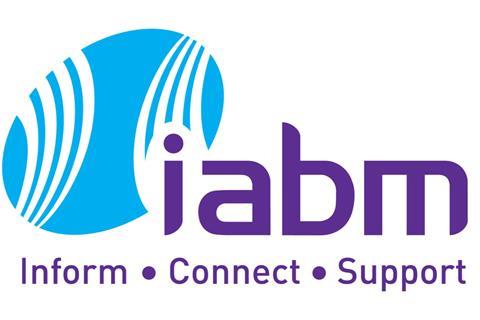Publish – Page 4
-
 Technical Papers
Technical PapersA 'display independent' High Dynamic Range television system
With improvements in technology, television with greater impact, more “presence”, deeper “immersion”, a “wow factor”, or, in short, better pictures, is now possible.
-
 Technical Papers
Technical PapersImage adaptation requirements for High Dynamic Range video under reference and non-reference viewing conditions
High Dynamic Range video (HDR) is a relatively new technique which allows the content producer to more accurately reproduce an image without the suppression of highlights usually associated with conventional video.
-
 Technical Papers
Technical PapersDASH in ATSC 3.0: Bridging the gap between OTT and broadcast
ATSC 3.0 revolutionizes TV broadcast distribution. For the first time, a hybrid system is designed from day 1 in order to support broadcast and broadband distribution in an integrated manner and to target different receiver platforms.
-
 Technical Papers
Technical PapersImproving live performance in HTTP adaptive streaming systems
While HTTP adaptive streaming (HAS) technology has been very successful in delivering stable over-the-top video experiences at large scale, the technology has a number of important limitations as well.
-
 Technical Papers
Technical PapersHigh Dynamic Range subjective testing
UHD televisions are now retailing in significant numbers, and UHD services are starting to appear in the market.
-
 Technical Papers
Technical PapersReal time cross-mapping of High Dynamic Range images
Broadcast production today utilises a single colour volume workflow, as majority of footage is captured in one format: SDR (gamma non-linear curve and ITU-R BT.709 (1) colour primaries).
-
 Technical Papers
Technical PapersBest practices for OTT dynamic ad insertion
With the streaming format wars in the rear view mirror, HAS, specifically Apple’s HTTP Live Streaming (HLS) and the Dynamic Adaptive Streaming over HTTP (MPEG DASH) specifications now allow for the efficient, scalable delivery of media content globally from conventional HTTP servers.
-
 Technical Papers
Technical PapersImplementing dynamic ad insertion in HTML5 using MPEG DASH
Content owners and broadcasters are increasingly using adaptive streaming (ABR) over HTTP to reach a multitude of devices at any time and place.
-
 Technical Papers
Technical PapersIncreasing ad personalization with server-side ad insertion
There is no question that consumers have come to expect content anywhere, any time and on any device, whether fixed or mobile, on demand.
-
 Technical Papers
Technical PapersLocal content delivery in SFNS using layered division multiplexing (LDM)
Terrestrial broadcast services delivery is based on Single Frequency Networks (SFNs) in most European countries, and most likely, it will be the future of the North American broadcasting networks.
-
 Technical Papers
Technical PapersTowards new forms of news gathering through crowdsourced live mobile streaming systems
With the growing popularity of social media sites, online video services, and smartphones, content consumers are recording, editing, and broadcasting their own stories.
-
 Technical Papers
Technical PapersBT Sport Ultra HD - Europe's first ultra high definition television sports channel
BT launched its IPTV service in 2006 offering a combination of On-Demand video and Digital Terrestrial Television. In 2012 BT TV added multicast delivered channels to the service providing High Definition (HD) Linear TV, over a Fibre-To-The-Cabinet (FTTC) access network, to BT Broadband customers.
-
 Technical Papers
Technical PapersReal world live 4K Ultra HD broadcasting with High Dynamic Range
The first public demonstrations of the live production and delivery to home of 3840 x 2160 images were held in the early 2010s. These early trials prioritised the broadcast of higher resolution images over increased dynamic range or wider colour gamut. They were the result of advances in technology throughout ...
-
 Technical Papers
Technical PapersCelebrating the launch of 8K/4K UHDTV satellite broadcasting and progress on full-featured 8K UHDTV in Japan
NHK has been engaged in the development and standardisation of the 8K “Super Hi- Vision” (SHV) system since 1995. Super Hi-Vision is a state-of-the-art television (TV) broadcasting system that provides ultra-realistic viewing experiences to viewers, creating the sensation that they are in the actual scene.
-
 Technical Papers
Technical PapersUHD for broadcast and the DVB Ultra HD-1 Phase 2 standard
The primary focus of this paper is to describe the different video options that will be used for broadcast or unicast over HTTP.
-
 Technical Papers
Technical PapersA social experience for online TV
You can’t stay relevant as a broadcaster with a one-to-many communication strategy. It’s a two-way street now. More and more content is being consumed on other screens than the television, and often outside of the live broadcasting schedule.
-
 Technical Papers
Technical PapersHow true, synchronized live OTT can change the second screen and social TV game
CDNs and OTT video distribution platforms today use technologies such as HTTP Live Streaming (HLS) and MPEG-DASH, which use segmentation of the video streams and HTTP for delivery.
- Previous Page
- Page1
- Page2
- Page3
- Page4
- Next Page





































